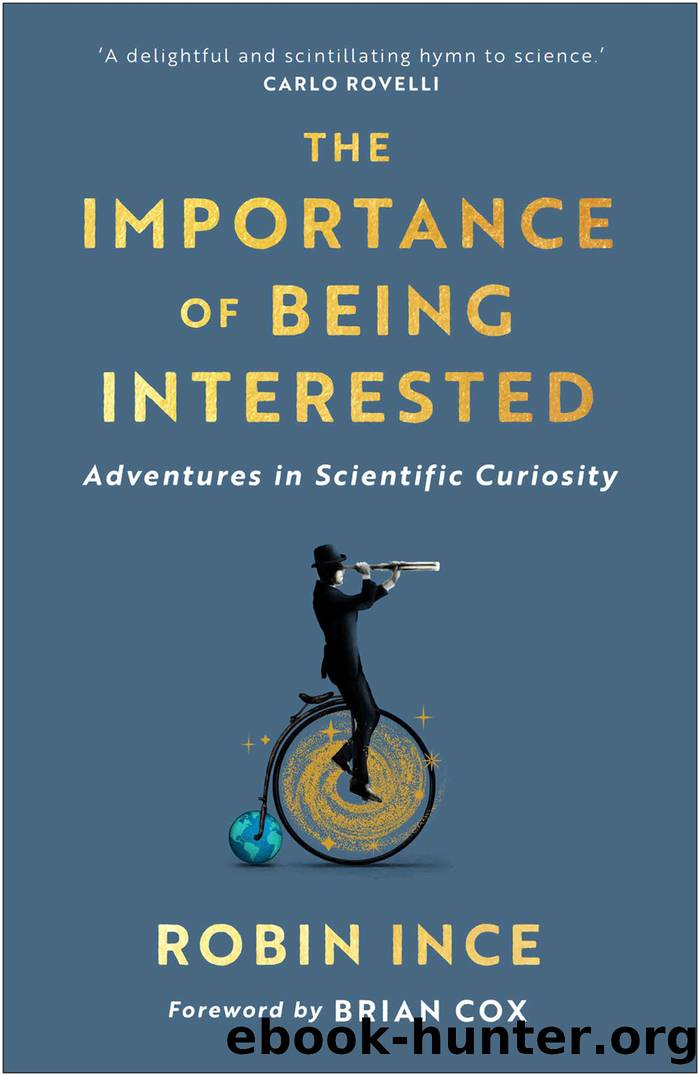The Importance of Being Interested by Robin Ince

Author:Robin Ince
Language: eng
Format: epub
Publisher: Atlantic Books
âIâm a doctor, not a bricklayerâ â Dr âBonesâ McCoy2
For the time being, we havenât been able to signal our existence to others any great distance from us. Weâve been waving by radio signal, so we require the extraterrestrials hopefully to be fans of The Jack Benny Program or The Archers, if we want a response. There is a little shell around Earth of eighty light years, in which the totality of every signal that we have sent into space is currently constrained. If the extraterrestrial intelligence is looking for intelligent life elsewhere in the cosmos and they are trying to find out whether Earth has it, they will have to be within that shell of eighty light years; and if they are further away, then those signals will not yet have had time to reach them. If they do encounter that signal, well, itâs going to be maybe eighty light years before we would get their response.
Tim OâBrien had the keys to the gate of the Lovell Telescope on the day I visited Jodrell Bank, so I am indebted to him for the chance to take the lift and the ladder into the centre of the dish. He has also played a major part in the Bluedot Festival. Tim has combined these two disciplines of music and astronomy by fusing music and sounds detected by the telescope, such as pulsars and the bleeps of space missions. Collaborators have included bands such as Sigur Rós and New Order. Tim created a single, âHello Moon, Can You Hear Me?â with Tim Burgess of The Charlatans. âHello Moon, can you hear me?â was a sentence that was bounced off the Moon in the late 1960s. Bernard Lovell himself was not originally keen on using his telescope to search for signals of extraterrestrial life, considering it a mere frippery for such technology. He changed his mind.
As with almost everyone else, Timâs initial interest in aliens stems from science fiction. For him, it was Doctor Who and Space: 1999, in which aliens with eyebrows made of hundreds and thousands could transform themselves into falcons and tigers.* His fascination has become more factual over time, but it was an area of interest that could be easily dismissed in the past. At a conference in 1985 no one was studying exoplanets â planets outside the solar system â and it would have seemed a very odd thing to do. This has all changed now, and it is a very important part of modern astronomy.
Like Seth Shostak, Tim believes there must be life elsewhere, possibly even in our solar system, such as microbial life on Mars. It seems too weird for life to have evolved only here. Optimistically, there should be at least a few other civilizations in our galaxy; 200 billion stars offer a lot of possibilities for quite a few of them to hold an Earth-like planet or two in orbit.
Tim believes that if every other planetary system had some sort of technological civilization on it, then we would have seen evidence by now.
Download
This site does not store any files on its server. We only index and link to content provided by other sites. Please contact the content providers to delete copyright contents if any and email us, we'll remove relevant links or contents immediately.
Sapiens: A Brief History of Humankind by Yuval Noah Harari(13036)
Sapiens by Yuval Noah Harari(4528)
Homo Deus: A Brief History of Tomorrow by Yuval Noah Harari(4272)
Pale Blue Dot by Carl Sagan(3995)
Origin Story: A Big History of Everything by David Christian(3133)
Livewired by David Eagleman(3113)
Brief Answers to the Big Questions by Stephen Hawking(2872)
Inferior by Angela Saini(2829)
Origin Story by David Christian(2677)
The Evolution of Beauty by Richard O. Prum(2550)
Signature in the Cell: DNA and the Evidence for Intelligent Design by Stephen C. Meyer(2495)
The Gene: An Intimate History by Siddhartha Mukherjee(2487)
Aliens by Jim Al-Khalili(2376)
How The Mind Works by Steven Pinker(2206)
Sex at Dawn: The Prehistoric Origins of Modern Sexuality by Ryan Christopher(2148)
From Bacteria to Bach and Back by Daniel C. Dennett(2144)
A Short History of Nearly Everything by Bryson Bill(2131)
Endless Forms Most Beautiful by Sean B. Carroll(2079)
Who We Are and How We Got Here by David Reich(2056)
